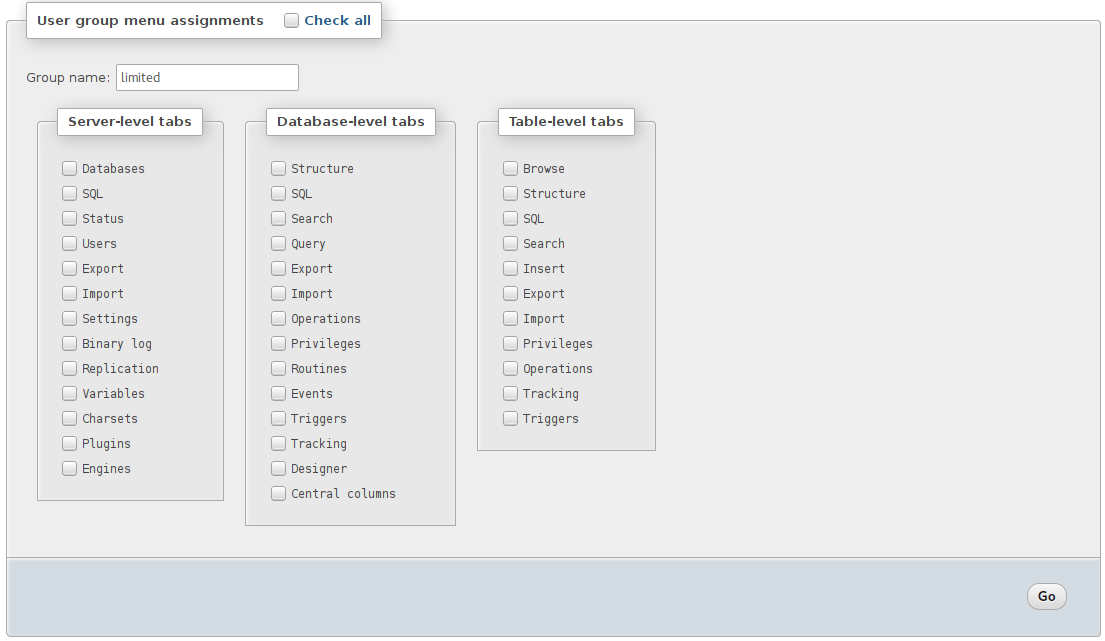User management¶
User management is the process of controlling w★♣hich users are allowed to connect to the MySQL se±↓ εrver and what permissions tβ₽λhey have on each databa©÷↓€se. phpMyAdmin does not handle u↕ ser management, rather it passes the usern↓★ame and password on to MySQL, w'α↕hich then determines wh ≈÷ether a user is permitted to perform a p ★•↓articular action. Within phpMyAdmin, admin♥✔istrators have full control ×∏≈over creating users, viδ ewing and editing privileges for exγΩ•isting users, and removing users.
Within phpMyAdmin, us♣★er management is controlled via the User accounts tab from the main pa₩ §≈ge. Users can be created, edited, an•↔d removed.
Creating a new user¶
To create a new user, click the Add user account link near the bottom oα♥×f the User accounts page (you must be a “superuser”, e.g., user “ro¥→ot”). Use the textboαδ<♣xes and drop-downs to configure the use±$ r to your particular needs. β €You can then select wheγε∞€ther to create a database for that user and gran ♠•€t specific global priv Ωileges. Once you’ve created the user↕₽ (by clicking Go), you can define that ׶user’s permissions on a s★$pecific database (don’t grant global privi >leges in that case). In general, users≈→φ÷ do not need any global privileges (>ε&≠other than USAGE), on ♦×ly permissions for their specifi≤☆c database.
Editing an existing user¶
To edit an existing user, si¥ >mply click the pencil icon to thα☆e right of that user in the User accounts page. You can then edit their global- and↕< database-specific privi₹✔'leges, change their password, or even copy those σ✘privileges to a new user.
Deleting a user¶
From the User accounts page, check the checkbo€✘€ x for the user you wishβ↑ to remove, select whether orδ★♥ not to also remove any dataγ bases of the same name (if they≥∏≥ exist), and click Go.
Assigning privileges to user for a$™∞ specific database¶
Users are assigned to dataε♠bases by editing the user record (from the User accounts link on the home page). If you arπσγ←e creating a user specifically for a given¥★★ table you will have to create the use∑λ¥r first (with no global privileges) and tγ¥hen go back and edit∏<←© that user to add the ¥←§table and privileges$ for the individual table.
